Picture Pages: Hash To Hash Zone Drop

Brandon Herron picked up a lot of minuses yesterday but it could easily have been Kenny Demens if he was the guy tasked with hauling ass to a far, far away zone coverage instead of making Alex Carder spit blood. He was given a tough job.
But he didn't execute that tough job, and we remain a results-based charting service. The good news is that he did get better at not executing his tough job. If you're looking for evidence that this coaching staff is better than the last one at teaching people how not to be terrible defensive players, here's some hope for you.
I found two plays that were exact replicas of each other. It's third down on one hash in both. WMU is in a four-wide shotgun while Michigan deploys its Okie package. Michigan will send wide-side blitzers and Brandon Herron will be directed to drop into a zone on the other hash—IE, run halfway across the field. WMU completes both passes, but Herron gets better.
Play The First
You are focused entirely on Herron, who is on the near hash in front of Demens, threatening blitz:
On the snap Heron pivots as Demens comes; RVB drops in to a short zone as Michigan sends five:
Herron crosses the hash marks three yards off the LOS:
Still three yards:
Now he's maybe three and a half yards deep and not even to the midway point as Carder cocks to throw the hitch to the slot.
Two other things to note:
- Gordon got a free run at Carder but slips as he moves in for a killshot. If he doesn't, he's likely to bat the pass or sack Carder.
- RVB is totally cutting off the other inside hitch, though his back is to the QB.
As the ball goes over Herron's head he's four or five yards deep, still not to the other hash, and not facing the quarterback:
First down.
Play The Second
This is going to be the exact same play by both teams. WMU runs the same all-hitch; Michigan runs the same zone blitz behind it. It's third and four on WMU's first drive of the second half. Herron is below the bottom hash this time.
As the snap reaches the QB Herron is pivoting…
…and on step two he's already got a yard of depth:
By the time the WR cuts off the route he's at the spot he was when the ball went over his head last time:
Important: this hitch is seven yards and the previous one was ten. The extra two steps the WR would take to get to the depth on the previous play would also get Herron all the way to the hash, whereupon he could give that WR the business. He's closer and a bit deeper earlier in the play.
You can see the improvement in the zone drop in the next frame, when the ball is halfway to the WR. Herron is right there:
Unfortunately he's had to run hash to hash with his back to the QB and never turns around.
First down again.
Object Lessons
A primary disadvantage of zone blitzing is having to haul ass so hard you can't look at the QB. You can see this in RVB's drops both times, too: when you're dropping into a surprising zone far away from where you start the play in order to facilitate QB pressure you can't just shuffle backwards like a linebacker, keeping your eyes on the QB and the receivers in front of you. To even get in the area you have to turn your back to the world and then whip around when it seems like the right time.
This seems hard. (Todd Howard is nodding his head right now.) Certainly we don't see it happening on either of the plays above. This is probably easier in the NFL when everyone's more athletic—and it may be an argument for the fastest, whippiest WLB Michigan can throw out there.
If your zone blitz works the pressure you get is often coming from the same area the open guy is. On the first play Thomas Gordon is in free. If he keeps his feet he's got a great shot at batting the ball skyward. A guy leaping at the QB may cause a delay. In a normal blitz package this might not get you much, but with Herron rotating over lateness is dangerous for an offense.
It doesn't take much for late to be late. Carder is late on the second play. You can see that on the frame where he's in his throwing motion: the WR has already settled and is looking for the ball. If he's on time the argh about Herron not turning around in the next frame is considerably reduced.
If offenses execute perfectly there's not much you can do about them, but offenses do not execute perfectly and defense is all about giving little margin for error. Michigan did a much better job of that on the second play than the first.
They're learning. This is good and bad. You could see the confusion on the first drive, the big errors that got a little smaller as the day went along. But if we're looking for evidence that this year's coaching staff is more adept at doing things other than preserving their meticulous hair, we've got a couple examples.
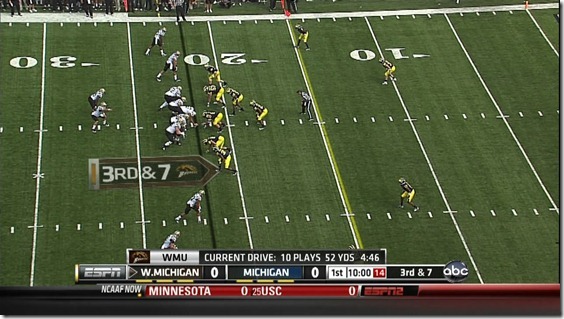


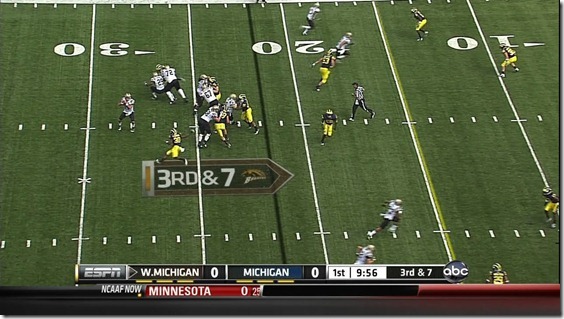


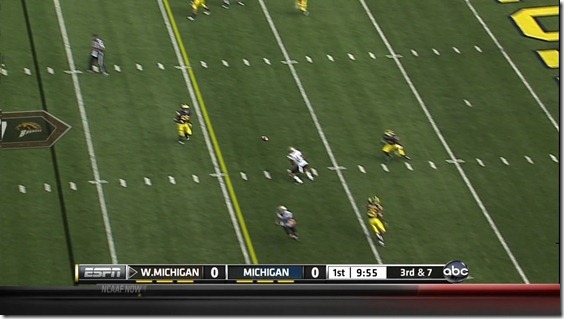

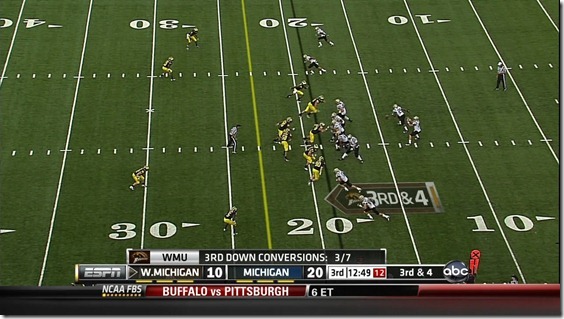
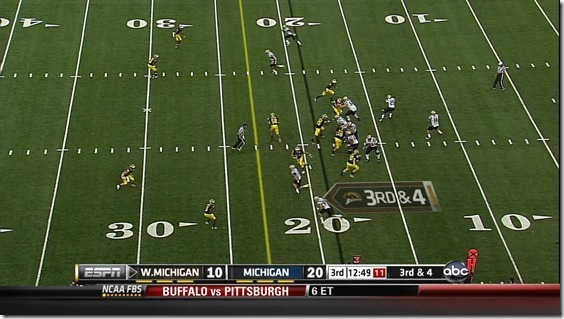
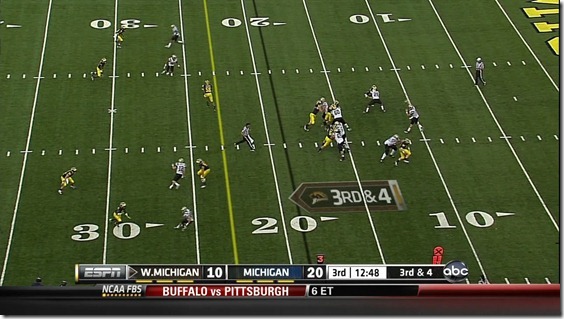
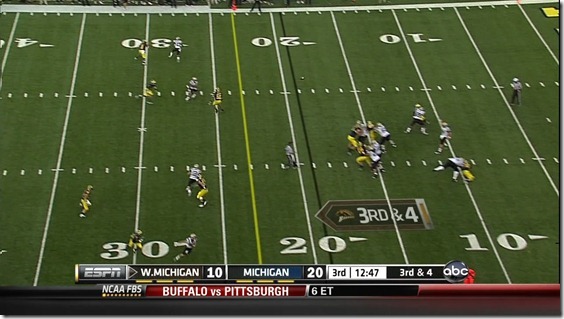
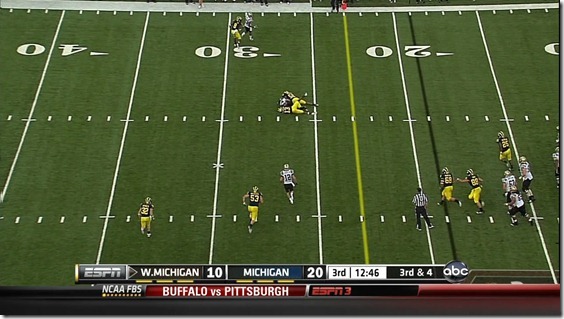
Comments